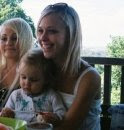Digital storytelling is a fantastic technical approach to improving literacy skills within the classroom. According to the Digital Storytelling Association (2009) is the art of oral storytelling combined with modern digital technologies using media applications such as images, voice and music with the challenge of taking their written ideas and transforming them into a visual medium.
The use of digital storytelling within the classroom would be an effective and engaging tool enhancing their:
Writing Skills - through the construction of a story, its sequencing and proof reading.
Speaking and Visual Skills - through communicating, enunciation and projecting and phrasing.
Technical Skills - through the development of the movie operating a camera, sequencing tools as well as recording and adding voice and music elements.
Personal Development Skills - enhances self confidence and builds relationships.
(Digital Storytelling Association, 2009).
The Digital Storytelling Association (2009) provides educators with easy to follow steps and resources to use when implementing this effective pedagogical tool within the classroom. Through the provision of resources within the four steps of Planning, Production, Presentation and Assessment educators are able to scaffold the students learning journey throughout the task to ensure that it is meaningful (Digital Storytelling Association, 2009).
I would use this tool within my classroom through asking students to create their own story based on Persuasive speech. Students will be given an idea and they will need to take a biased approach and use the persuasive speech they have acquired over their unit to 'win' over their audience. This can be done in a creative fictional or non fiction genre. This would incorporate Kearsley & Shneiderman's Engagement Theory (1999) through the relating phase where students will be given an idea or statement that will be meaningful to them (may be related to current issue within the classroom, school or community) through this they will be collaborating on ideas and planning before they move into their creating phase which would be the compilation and completion of their digital story then they will be donating or sharing it with their fellow classmates.
This tool makes the learning authentic and real to our digital natives and has put an interesting modernised approach to 'story time' making it interesting and engaging.
References
Digital Storytelling Association. (2009). Digital Storytelling for Educators. Retrieved August 20, 2009, from http://www.lubbockisd.org/sfirenza/storytelling/
Kearsley, G. & Shneiderman, G. (1999). Engagement Theory: a framework for technology-based teaching and learning. Retrieved August 20, 2009, from http://home.sprynet.com/~gkearsley/engage.htm
Subscribe to:
Post Comments (Atom)




Hi Amanda,
ReplyDeleteI agree that Digital Storytelling would be a great authentic learning experience for students. I have not yet used this in my classroom but it would definitely be one that I will have to try out some day.
What I also found interesting was how digital storytelling enhances a students personal development skills. This could be analysed by Brad Cheek (2006) Multiple Intelligences just a suggestion. But I found that information very appealing.
Your idea for incorporating this into a lesson was great. Well done!
Thanks,
Cassie
The concept of employing digital storytelling in the classroom is one that I find very appealing. It enables children to make the connection between writing and images, which can enhance learning. I've found that pupils retain more when given more imaginative homework like this one. Personally, I've found it difficult to strike a balance between creative projects and tests; I've sincerely wanted someone to take my exam for me so I could concentrate more on the assignments that I genuinely enjoy studying for.
ReplyDelete